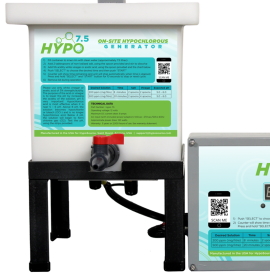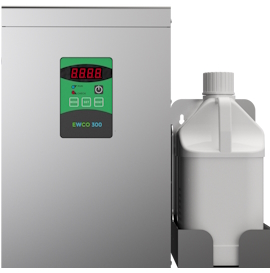Research > Industry > Agriculture > Application: All
Common Names for Hypochlorous Acid Solutions
- Electrolytically Generated Hypochlorous Acid
- Neutral Electrolyzed Water (NEW)
- Electrolyzed Oxidizing Water (EOW)
- Electro-chemically Activated Water (ECA)
- Super-oxidized water (SOW)
Results: 31 published articles

Microbe(s): Penicillium digitatum, Pseudomonas spp.

Microbe(s): Total Microbial Count

Microbe(s): Total Microbial Count, Escherichia coli O157:H7, Listeria monocytogenes, Pseudomonas spp., Fungi, Yeast

Microbe(s): Dioscorea spp.

Microbe(s): Aspergillus flavus, A. parasiticus, A. nomius, RE: Aflatoxin

Microbe(s): Escherichia coli

Microbe(s): Listeria monocytogenes

Microbe(s): Bacillus cereus

Microbe(s): Fusarium sp.

Microbe(s): Total Microbial Count

Microbe(s): Fusarium graminearum

Microbe(s): aflatoxin

Microbe(s): Phytophthora parasitica var. nicotianae

Microbe(s): Total Microbial Count

Microbe(s): Botrytis cinerea, Monilinia fructicola

Microbe(s): None

Microbe(s): Total Microbial Count

Microbe(s): Fungi, Botrytis cinerea, Monilina fructicola

Microbe(s): Fungi, Penicillium digitatum

Microbe(s): Bacillus cereus

Microbe(s): Multiple

Microbe(s): Total Microbial Count

Microbe(s): Escherichia coli O157: H7

Microbe(s): Salmonella

Microbe(s): Salmonella enterica

Microbe(s): Staphylococcus, Staphylococcal enterotoxin-A

Microbe(s): Fungi, Aspergillus parasiticus, aflatoxin B1

Microbe(s): Fungi

Microbe(s): Fungi

Microbe(s): Tilletia indica

Microbe(s): Fungi
Best Hypochlorous Acid (HOCL) Generators
 Portable Hypochlorous Acid (HOCL) Machine
Portable Hypochlorous Acid (HOCL) Machine
Make high quality hypochlorous acid in the home or office.
$159.99 + Free Shipping
 HOCL Machine + Electrostatic Sprayer
HOCL Machine + Electrostatic Sprayer
Make hypochlorous acid and spray with an electrostatic cold fogger.
$309.98 + Free Shipping


